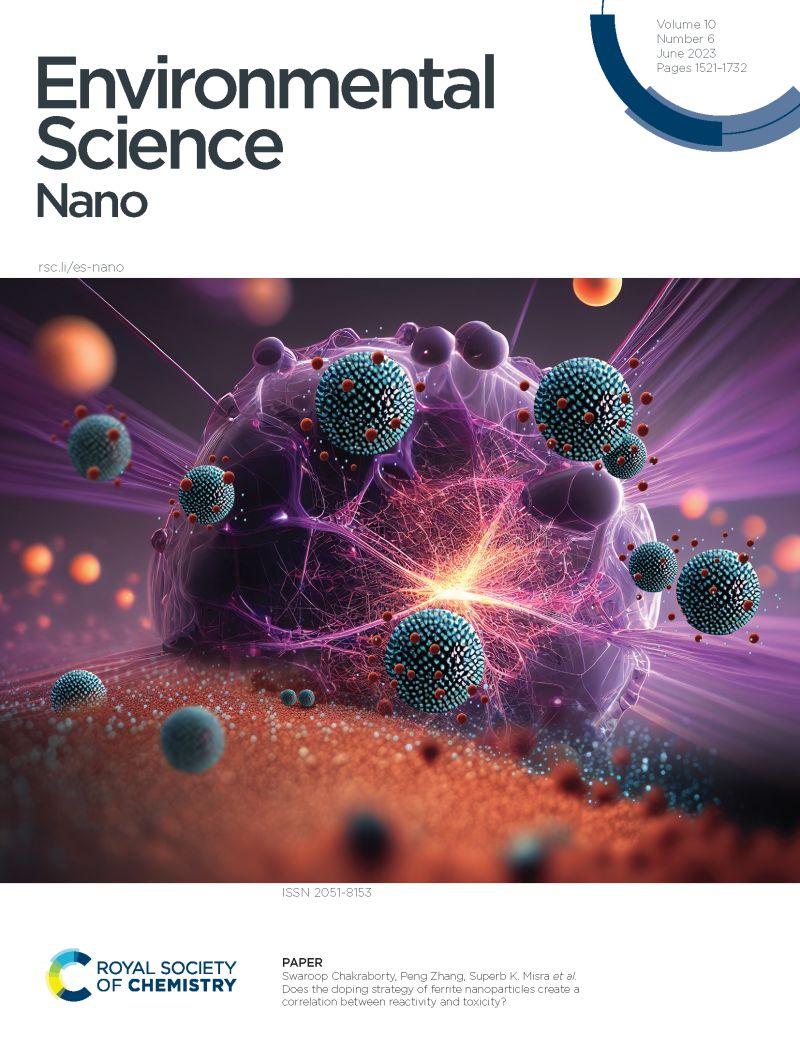Unravelling the in vivo biotoxicity of green-biofabricated Graphene Oxide-Microplastic hybrid mediated by proximal intrinsic atomic interaction
IF 5.8
2区 环境科学与生态学
Q1 CHEMISTRY, MULTIDISCIPLINARY
引用次数: 0
Abstract
Graphene Oxide (GO) nano-sheets have emerged as a potent nanomaterial for a range of applications like antibacterial, antibiofilm. Besides, Microplastic are emerging as a chronic pollutant originated from the aggrandized usage of plastics, for possessing serious repercussions to the living beings and the environment. In concern of the issue, the individual toxicological impacts of GO nano-sheets and Polystyrene (PS) have received substantial research, the mechanistic details and toxicological effects of GO and PS as a hybrid is yet unknown. This study evaluates the in vivo biotoxicity of a lab mimic green synthesized GO@PS hybrid using embryonic zebrafish through experimental and computational approach. The physiochemical characterzation of the GO@PS verified the synthesis of a stable 1433.0 ± 268.0 nm sized GO@PS hybrid with a zeta potential of -47.3 ± 5.7 mV. Mechanistic analysis deduced the toxicological impact as a cause of induced apoptosis due to dysregulated oxidative stress lead by the hypoxic condition created due to blockage of chorion by attachment and accumulation of GO@PS. The study depicted the in vivo toxicity of GO, PS and GO@PS at cellular and molecular level to draw attention for taking measures in usage of GO and PS in terms of environmental and human health.求助全文
约1分钟内获得全文
求助全文
来源期刊

Environmental Science: Nano
CHEMISTRY, MULTIDISCIPLINARY-ENVIRONMENTAL SCIENCES
CiteScore
12.20
自引率
5.50%
发文量
290
审稿时长
2.1 months
期刊介绍:
Environmental Science: Nano serves as a comprehensive and high-impact peer-reviewed source of information on the design and demonstration of engineered nanomaterials for environment-based applications. It also covers the interactions between engineered, natural, and incidental nanomaterials with biological and environmental systems. This scope includes, but is not limited to, the following topic areas:
Novel nanomaterial-based applications for water, air, soil, food, and energy sustainability
Nanomaterial interactions with biological systems and nanotoxicology
Environmental fate, reactivity, and transformations of nanoscale materials
Nanoscale processes in the environment
Sustainable nanotechnology including rational nanomaterial design, life cycle assessment, risk/benefit analysis
 求助内容:
求助内容: 应助结果提醒方式:
应助结果提醒方式:


